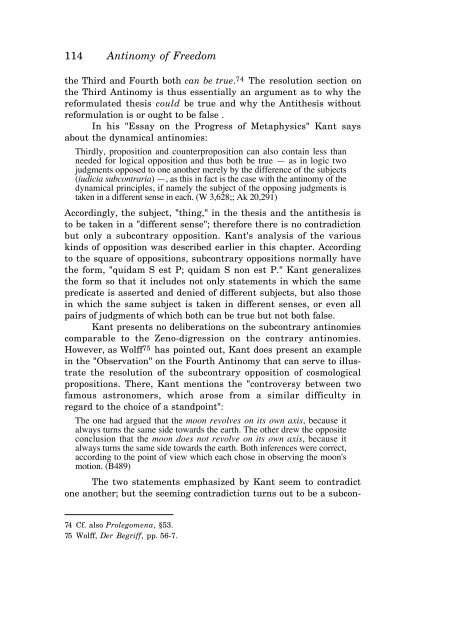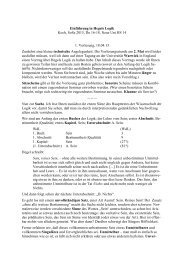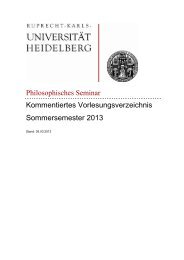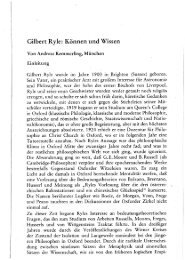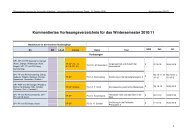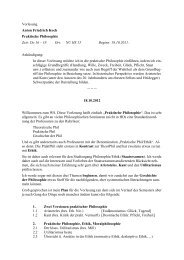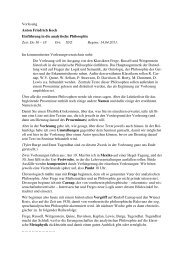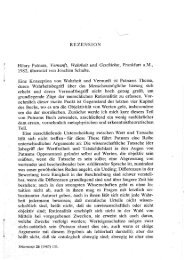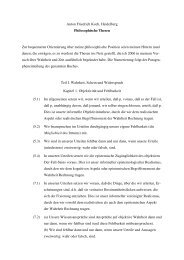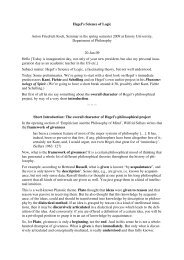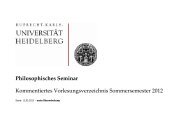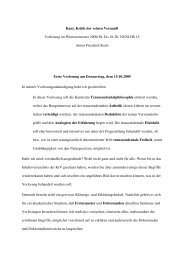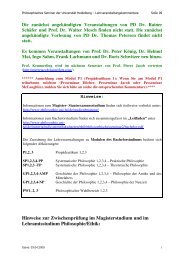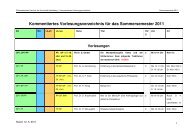KANT'S CRITIQUE OF TELEOLOGY IN BIOLOGICAL EXPLANATION
KANT'S CRITIQUE OF TELEOLOGY IN BIOLOGICAL EXPLANATION
KANT'S CRITIQUE OF TELEOLOGY IN BIOLOGICAL EXPLANATION
Create successful ePaper yourself
Turn your PDF publications into a flip-book with our unique Google optimized e-Paper software.
114 Antinomy of Freedom<br />
the Third and Fourth both can be true. 74 The resolution section on<br />
the Third Antinomy is thus essentially an argument as to why the<br />
reformulated thesis could be true and why the Antithesis without<br />
reformulation is or ought to be false .<br />
In his "Essay on the Progress of Metaphysics" Kant says<br />
about the dynamical antinomies:<br />
Thirdly, proposition and counterproposition can also contain less than<br />
needed for logical opposition and thus both be true — as in logic two<br />
judgments opposed to one another merely by the difference of the subjects<br />
(iudicia subcontraria) —, as this in fact is the case with the antinomy of the<br />
dynamical principles, if namely the subject of the opposing judgments is<br />
taken in a different sense in each. (W 3,628;; Ak 20,291)<br />
Accordingly, the subject, "thing," in the thesis and the antithesis is<br />
to be taken in a "different sense"; therefore there is no contradiction<br />
but only a subcontrary opposition. Kant's analysis of the various<br />
kinds of opposition was described earlier in this chapter. According<br />
to the square of oppositions, subcontrary oppositions normally have<br />
the form, "quidam S est P; quidam S non est P." Kant generalizes<br />
the form so that it includes not only statements in which the same<br />
predicate is asserted and denied of different subjects, but also those<br />
in which the same subject is taken in different senses, or even all<br />
pairs of judgments of which both can be true but not both false.<br />
Kant presents no deliberations on the subcontrary antinomies<br />
comparable to the Zeno-digression on the contrary antinomies.<br />
However, as Wolff 75 has pointed out, Kant does present an example<br />
in the "Observation" on the Fourth Antinomy that can serve to illustrate<br />
the resolution of the subcontrary opposition of cosmological<br />
propositions. There, Kant mentions the "controversy between two<br />
famous astronomers, which arose from a similar difficulty in<br />
regard to the choice of a standpoint":<br />
The one had argued that the moon revolves on its own axis, because it<br />
always turns the same side towards the earth. The other drew the opposite<br />
conclusion that the moon does not revolve on its own axis, because it<br />
always turns the same side towards the earth. Both inferences were correct,<br />
according to the point of view which each chose in observing the moon's<br />
motion. (B489)<br />
The two statements emphasized by Kant seem to contradict<br />
one another; but the seeming contradiction turns out to be a subcon-<br />
74 Cf. also Prolegomena, §53.<br />
75 Wolff, Der Begriff, pp. 56-7.


